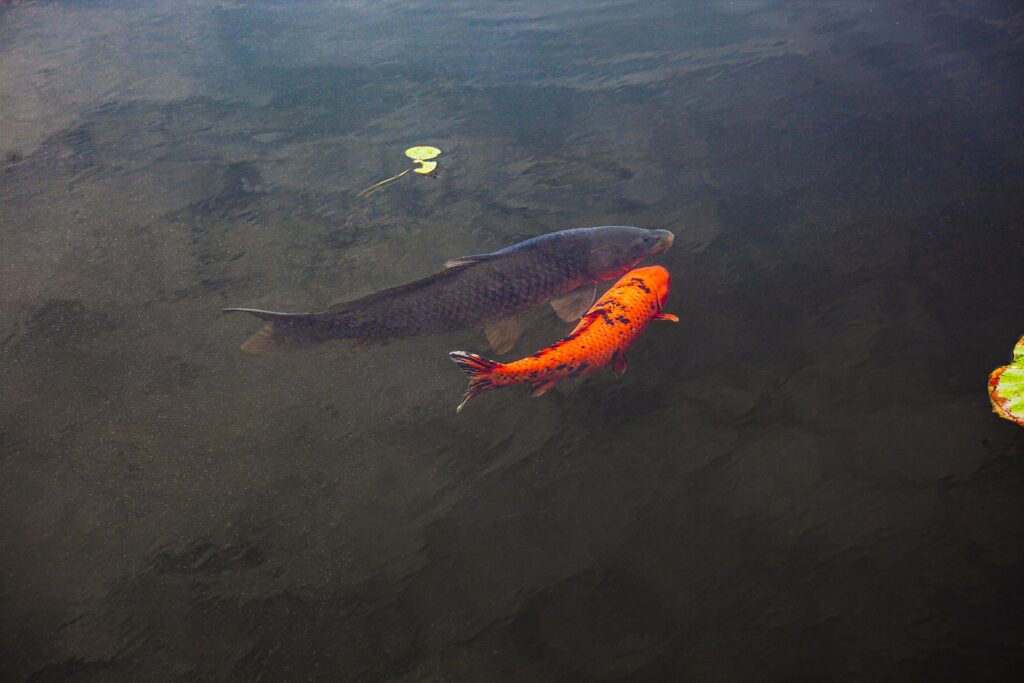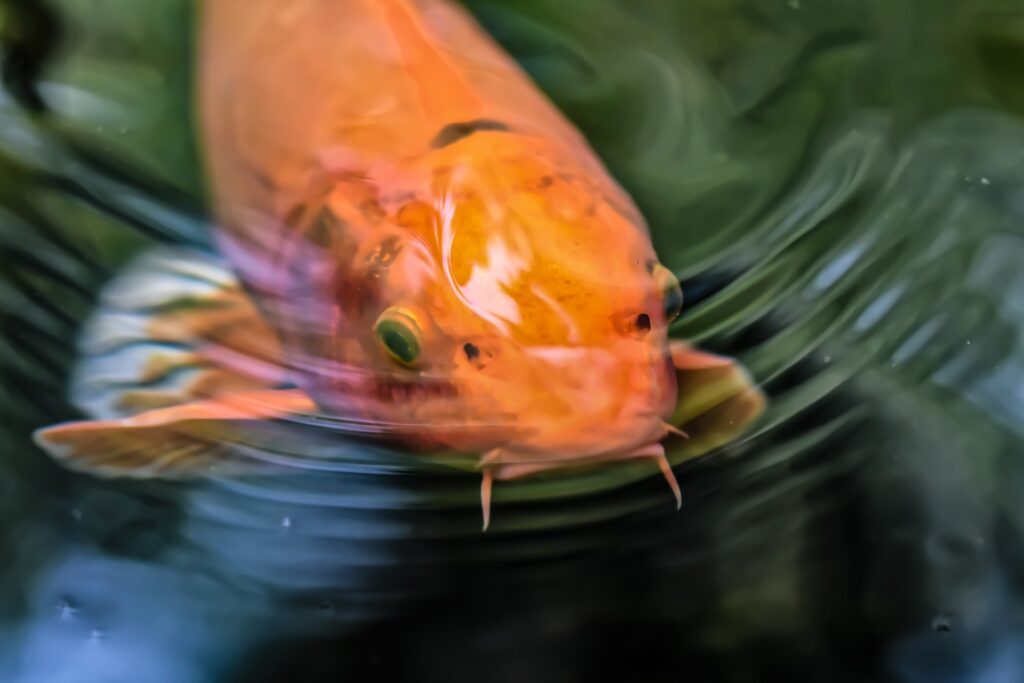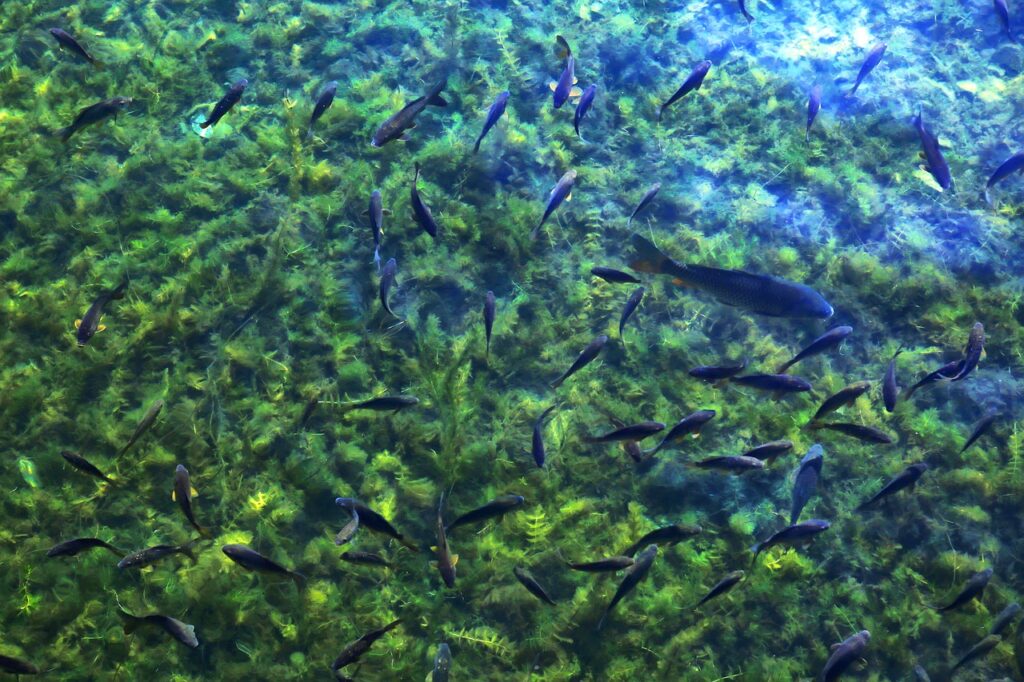Today, we will explore the crucial question of how deep does a fishpond need to be to keep fish alive, as well as how to maintain the well-being of its aquatic inhabitants. Understanding the ideal depth for a fishpond is not only vital for the survival and thriving of the fish, but it also plays a significant role in promoting a healthy ecosystem within the pond.
By examining the various factors that influence fish health and the necessary conditions for their survival, we aim to provide you with valuable insights on creating an optimal fish-friendly environment.
Factors Affecting Fishpond Depth
Species of Fish
The depth requirements for a fishpond depend greatly on the species of fish that will inhabit it. Different species have varying preferences for water depth and habitat. Some fish, like goldfish or guppies, can thrive in shallow waters, while others, like Koi or large-scale fish, require deeper ponds to meet their needs.
Fish Size
The size of the fish also plays a crucial role in determining the necessary depth of a fishpond. Smaller fish may not require as much depth as larger ones, as they have less need for swimming space and can tolerate shallower waters. Larger fish, on the other hand, need more room to swim and maneuver, necessitating a deeper pond.
Temperature
Water temperature is another factor that influences the depth requirements for a fishpond. Different species have different temperature preferences, and the depth of the pond can help maintain the desired temperature range. Deeper ponds tend to have more stable temperatures, providing a suitable environment for coldwater or warmwater fish.
Oxygen Levels
Oxygen levels in the water are vital for the survival of fish. The depth of the fishpond can impact the oxygen concentration, as deeper waters typically have higher oxygen levels due to increased contact with the air. Adequate oxygenation is crucial for the health and well-being of the fish.
Feeding Requirements
The feeding habits of the fish also affect the depth requirements of a fishpond. Some fish species feed near the water’s surface, while others are bottom dwellers. The depth of the pond should be sufficient to allow for easy access to food sources, ensuring the fish can feed in their preferred manner.

Minimum Depth Requirements
Depth for Common Fish Species
For most common fish species, a minimum depth of two to three feet is generally sufficient. This depth provides enough space for swimming and allows for proper temperature regulation. Popular fish species like goldfish, guppies, and gouramis can thrive in ponds of this depth.
Depth for Koi Fish
Koi fish, known for their vibrant colors and graceful swimming, require a deeper pond. Ideally, a depth of at least four to six feet is recommended for Koi fish. This depth allows them to grow and swim freely, providing a healthy ecosystem for these beautiful and prized fish.
Depth for Large-Scale Fish Farming
In the case of large-scale fish farming, the depth requirements may vary depending on the specific fish species and the farming practices being employed. Some commercial fish species may require depths of eight to ten feet or more to accommodate their growth and breeding needs.
Depth for Coldwater Fish
Coldwater fish, such as trout or salmon, prefer cooler temperatures and therefore require deeper ponds to maintain the desired water temperature. A depth of six feet or more is suitable for these fish, as it helps create a stable and cool environment that is conducive to their well-being.
Depth for Warmwater Fish
Warmwater fish, including bass or catfish, thrive in higher water temperatures and don’t require the same depth as coldwater species. A depth of three to four feet is typically adequate for warmwater fish, providing them with enough space to swim and maintaining a suitable temperature range.

Considerations for Fish Health
Water Temperature
Maintaining the appropriate water temperature is essential for fish health. Water too warm or too cold can lead to stress, disease, or even death. Regular monitoring and adjusting of water temperature are necessary to ensure the fishpond remains within the ideal temperature range for the specific fish species.
Oxygen Levels
Adequate oxygenation is crucial for the survival of fish. Low oxygen levels can lead to suffocation and stress. To ensure optimal oxygen levels, ponds need proper aeration, such as the use of air pumps or water fountains, especially in cases where the depth may limit natural oxygen diffusion.
Water Filtration
Maintaining clean and clear water is vital for fish health. Proper water filtration systems, such as mechanical and biological filters, help remove impurities and ensure water quality. The depth of the pond can affect the efficiency of filtration systems, as larger volumes of water may require more robust filtration methods.
Water Circulation
Proper water circulation helps distribute oxygen, nutrients, and heat throughout the pond. It prevents stagnant areas and promotes a healthy ecosystem. The depth of the pond can impact water circulation, as deeper water can have different flow patterns. Ensuring adequate water movement is essential for maintaining fish health.
Feeding Habits
Understanding the feeding habits of the fish is important for their overall health and well-being. Some fish feed on the water surface, while others feed near the bottom. Providing suitable feeding areas at the appropriate depth ensures that all fish can access their food easily and prevents competition and stress during feeding times.
Construction and Design Factors
Pond Location
Choosing the right location for the fishpond is crucial for its success. Factors such as sunlight exposure, wind patterns, and proximity to trees or buildings all play a role in pond health. Avoiding areas prone to excessive shade, strong winds, or excessive debris will contribute to maintaining optimal conditions in the fishpond.
Pond Size and Shape
The size and shape of the fishpond can impact its depth requirements. Larger ponds generally have more potential for depth variation, allowing for the creation of different habitats within the pond. The shape of the pond can also affect water circulation and the distribution of fish and other pond inhabitants.
Pond Liner or Concrete
Whether using a pond liner or concrete for pond construction can influence the achievable depth. Pond liners provide flexibility in shaping and depth, while concrete ponds are more rigid but can support greater depths. The choice between the two materials should be made based on budget, personal preference, and project requirements.
Depth Consistency
Maintaining consistent depth throughout the fishpond is important for fish health and habitat creation. Gradual depth changes can be achieved by incorporating shelves or slopes, allowing for different zones within the pond. These variations contribute to creating a diverse environment and meeting the unique needs of different fish species.
Shelf or Slope Design
Including shelves or slopes within the fishpond design allows for the creation of varying depths. Shelves are beneficial for plants or smaller fish species, while slopes provide unrestricted swimming space for larger fish. These design features offer opportunities for fish to exhibit natural behaviors and utilize the entire pond environment.

Importance of Depth Variation
Thermocline Formation
Depth variation within the fishpond contributes to the formation of a thermocline. A thermocline is a distinct temperature boundary that separates warmer surface waters from cooler deeper waters. It plays a significant role in regulating water temperature, preventing excessive heat or cold from impacting fish health.
Fish Behavior and Habitat
Different fish species exhibit distinct behaviors and habitat preferences. Depth variation provides opportunities for fish to seek optimal conditions within the pond. It enables them to find areas with suitable temperatures, oxygen levels, and feeding opportunities, creating a diverse and dynamic ecosystem.
Aquatic Plant Growth
Depth variation influences the growth and development of aquatic plants within the fishpond. Some plants thrive in shallow areas, while others prefer deeper waters. By incorporating different depths within the pond, the opportunity for a diverse range of aquatic plants is enhanced, supporting a balanced ecosystem and providing hiding places for fish.
Water Quality Management
Depth variation plays a crucial role in managing water quality in the fishpond. It increases the water volume available for dilution of chemicals, toxins, or waste products, reducing the risk of pollution and creating a healthier environment for fish. Proper water quality management is vital for fish health, growth, and reproduction.
Natural Predators
Depth variation can help protect fish from natural predators. Shallow areas may attract predatory birds or mammals, while deeper areas can provide a refuge for fish. Fishponds with varying depths allow fish to seek cover and escape from potential predators, enhancing their safety and well-being.
Benefits of Deeper Fishponds
Thermoregulation
Deeper fishponds provide better thermoregulation, especially in regions with extreme temperature fluctuations. The greater volume of water helps to stabilize temperature and reduce the impact of external temperature changes. This contributes to maintaining a more stable and favorable environment for the fish, promoting their overall health and longevity.
Water Quality Maintenance
Deeper fishponds offer improved water quality maintenance. The increased volume of water dilutes waste products and reduces the risk of toxin buildup. This is particularly important in heavily stocked ponds or those with a higher biological load. The larger water volume also allows for better filtration and proper functioning of biological systems.
Increased Space for Fish
Deeper fishponds provide more swimming space for the fish. This allows them to exhibit natural behaviors, improve their fitness, and enhance overall fish well-being. The additional space in deeper ponds also reduces the risk of overcrowding, minimizing competition for resources and decreasing stress among the fish population.
Reduced Risk of Overpopulation
Deeper fishponds help mitigate the risk of overpopulation. The increased space and water volume limits the reproduction and growth rates of fish, preventing the pond from becoming overcrowded. This promotes a healthier balance between the fish population and the available resources, reducing the risk of disease outbreaks and ensuring optimal fish health.
Adds Aesthetics to the Pond
Deeper fishponds can enhance the overall aesthetics of the pond. The visual appeal of deeper waters can create a more dramatic and natural-looking environment. It also provides an opportunity to incorporate different aquatic plants and features, such as waterfalls or underwater caves, further enhancing the beauty and enjoyment of the fishpond.
Disadvantages of Shallow Fishponds
Temperature Fluctuations
Shallow fishponds are more susceptible to temperature fluctuations, especially in regions with extreme weather conditions. The limited volume of water makes it harder to maintain stable temperatures, exposing fish to potentially harmful temperature variations. This can lead to stress, reduced immune function, and increased susceptibility to diseases.
Limited Oxygenation
Shallow fishponds may have lower oxygen levels compared to deeper ponds. The surface area of the water exposed to air is smaller, resulting in less contact for oxygen diffusion. Insufficient oxygenation can cause fish to suffocate or exhibit signs of stress and poor health. Supplementary aeration methods may be required to maintain adequate oxygen levels.
Higher Pollution Risks
In shallow fishponds, waste products, debris, and excess nutrients can accumulate more quickly, leading to increased pollution risks. The limited water volume makes it harder to dilute and disperse pollutants, which can negatively impact water quality and fish health. Regular monitoring and maintenance are essential to prevent pollution-related issues.
Fish Stress and Disease
Overcrowding and limited swimming space in shallow fishponds can lead to increased fish stress and higher rates of disease transmission. Fish may experience aggression, competition for resources, and limited options for escape or retreating. These factors compromise their immune systems, making them more susceptible to diseases and parasites.
Increased Algae Growth
Shallow fishponds are more prone to excessive algae growth due to the increased exposure to sunlight. Algae thrive in shallow waters with abundant sunlight and nutrients. Excessive algae blooms can decrease oxygen levels, disrupt the ecological balance, and pose a threat to fish health. Regular algae control measures may be necessary in shallow ponds.
Maintenance and Management
Regular Water Testing
Regular water testing is crucial for maintaining optimal water quality in a fishpond. Testing parameters such as pH, ammonia, nitrite, nitrate, and dissolved oxygen levels helps ensure that the pond’s ecosystem is balanced and suitable for fish health. Monitoring these parameters allows for necessary adjustments and timely intervention if any issues arise.
Temperature Control Methods
Implementing temperature control methods can help maintain stable water temperatures in the fishpond. Techniques such as shading, adding aquatic plants, or using cooling or heating systems when needed can help mitigate temperature fluctuations. Consistently monitoring and adjusting the water temperature can prevent stress and ensure the well-being of the fish.
Oxygenation Techniques
In ponds with limited natural oxygenation, supplemental aeration techniques should be used to maintain proper oxygen levels. Air pumps, water fountains, or waterfalls can be utilized to increase water movement and oxygenation. The choice of oxygenation method should take into account the pond’s depth, size, and specific fish species requirements.
Cleaning and Filtration
Regular cleaning and maintenance of the fishpond are essential for water quality and fish health. Removal of debris, excess algae, and excess fish food prevents pollution and reduces the risk of oxygen depletion. Proper maintenance of filtration systems, including cleaning mechanical and biological filters, ensures efficient removal of impurities and supports water clarity.
Fish Population Management
Proper fish population management is vital for a healthy and thriving fishpond. Regular monitoring of fish population size, growth rates, and behavior allows for timely intervention to prevent overcrowding. If necessary, selective fish harvest or relocation can be performed to maintain a suitable fish density and reduce stress on the fish and the pond ecosystem.

Expert Recommendations
Specific Fish Species Requirements
Different fish species have varying depth preferences and requirements. Consulting species-specific guidelines and expert recommendations is crucial when designing a fishpond. Consider factors such as swimming space, temperature range, feeding habits, and overall habitat needs to create an environment that promotes the specific fish species’ health and well-being.
Tailoring Depth for Desired Fish Population
When planning a fishpond, carefully consider the desired fish population and their unique requirements. Determine the depth needed to accommodate the particular fish species and their optimal habitat conditions. Taking into account the size, temperature, oxygenation, and feeding requirements of the fish will allow for a well-suited and thriving fish population.
Consulting Aquaculture Professionals
For more complex or large-scale fish farming operations, consulting with aquaculture professionals is highly recommended. These experts have the knowledge and experience necessary to guide the design and construction of fishponds tailored to specific fish species and farming goals. Their expertise ensures the creation of optimal conditions for successful fish farming.
Considering Regional Climate Factors
Regional climate factors, such as temperature ranges and seasonal variations, should be taken into account when planning a fishpond. Different regions may require different depths to maintain suitable temperature conditions. Understanding the climate and local weather patterns will help determine the most appropriate depth and design for the fishpond.
Monitoring and Adjustment
Regular monitoring and adjustment of pond conditions are essential for ensuring fish health and pond longevity. Constant observation of water quality parameters, fish behavior, and overall pond performance allows for timely intervention. Adapting to changing conditions and making necessary adjustments ensures that the fishpond remains a healthy and sustainable ecosystem.
How Deep Does A Fishpond Need To Be To Keep Fish Alive
Depth considerations for fishponds play a vital role in maintaining optimal fish health and creating a successful and sustainable ecosystem. Factors such as species requirements, temperature, oxygen levels, feeding habits, and construction design influence the depth requirements for a fishpond.
Proper understanding and implementation of these considerations lead to improved fish well-being, enhanced water quality, and overall pond aesthetics. By striving for optimal environmental conditions, regularly maintaining and managing the fishpond, and seeking expert guidance when needed, fish enthusiasts can enjoy the benefits of a well-designed and thriving fishpond.
So hopefully, that helps with understanding the water depth in a fish pond. If you need further information on fish ponds, please take a look at ‘What Is The Ideal Pond Ecosystem‘.
